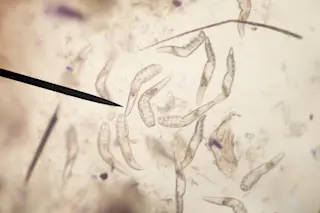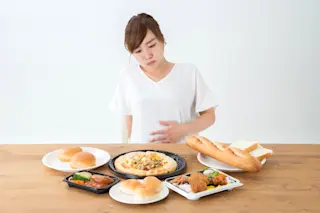There's a rather perplexing paper out in PNAS which I stumbled upon today, An evolutionary process that assembles phenotypes through space rather than through time. Perplexing because I wonder if it is almost so obvious as to be boring, in the trivial but true category, or if it points to a rather deep dimensions of evolutionary process which we've ignored. The authors themselves offer up that they're attempting to reintroduce a concept which has long been in the literature, and, they admit that there isn't much empirical data to test the importance of the dynamic which they're outlining. For example, after discussing the consequences which might be entailed by the widespread significance of the phenomenon which they're describe, they note, "We do not have enough data to test this proposition." Here's their abstract:
In classical evolutionary theory, traits evolve because they facilitate organismal survival and/or reproduction. We discuss a different type of evolutionary mechanism that relies upon differential dispersal. Traits that enhance rates of dispersal inevitably accumulate at expanding range edges, and assortative mating between fast-dispersing individuals at the invasion front results in an evolutionary increase in dispersal rates in successive generations. This cumulative process (which we dub “spatial sorting”) generates novel phenotypes that are adept at rapid dispersal, irrespective of how the underlying genes affect an organism's survival or its reproductive success. Although the concept is not original with us, its revolutionary implications for evolutionary theory have been overlooked. A range of biological phenomena (e.g., acceleration of invasion fronts, insular flightlessness, preadaptation) may have evolved via spatial sorting as well as (or rather than) by natural selection, and this evolutionary mechanism warrants further study.
The distinction they're making here is that natural selection conventionally understood entails differential fitness correlated with phenotypes, which themselves are correlated with underlying genotypes, so that the allele frequencies change generation to generation. Spatial selection does not operate in this fashion. Rather, aggregating over the whole population the authors seem to be arguing that there need not be differential fitness of genotypes, rather, genotypes can disaggregate and sort themselves over space. In particular they focus phenotypes correlated with dispersal. The idea is simple. Consider heritable variation for speed. If a population enters into a period of range expansion the faster animals would presumably push out on the wave of demographic expansion, and be more likely to mate with each other because of proximity. An interesting point is that even if the traits which are correlated with dispersal have negative overall fitness consequences (e.g., individuals near the core of the range have higher fitness than those on the frontier) they can predominate on the edge, and even increase in magnitude, due to assortative mating. To some extent this is going to be less important in a stationary state evolutionary equilibrium. But there are likely many evolutionary periods which are not in an equilibrium, but moving through several transients. In fact transients may be more common than not. The relevance to human evolution is alluded to in the text:
Spatial sorting also may favor bold, risk-taking behaviors...or individuals that readily handle the stress of intense physical activity and novel environments. Our first human ancestors to cross the oceans and invade new lands probably were highly nonrandom in dispersal-relevant traits as well as in behavioral flexibility and within-group cooperation...Indeed, selection for rapid dispersal at the invasion front may explain the rapid spread of modern humans through Europe and North America and the large body sizes of those early dispersers....
More broadly spatial selection may be an important dynamic in systems characterized by non-equilibrium states. Species which are characterized by local population extinctions and periodic re-colonizations, for example. This to me is what makes the paper worth noting. One can argue how much of biological evolutionary process is equilibrium or non-equilibrium, but I think culture is a domain where non-equilibrium dynamics are strongly operative.













